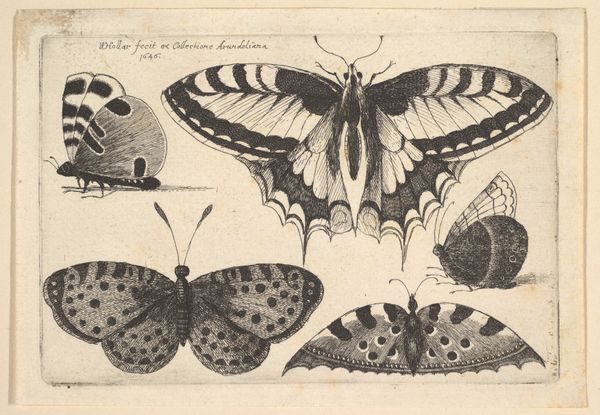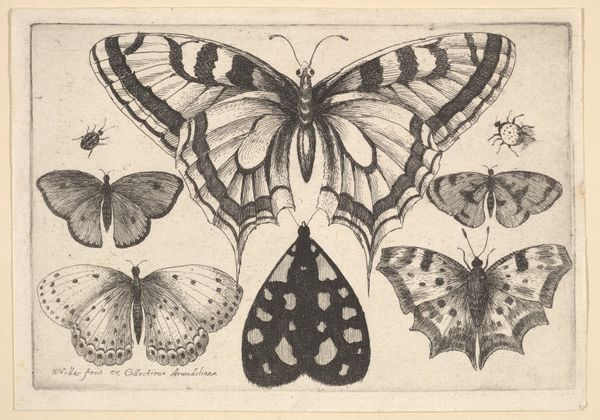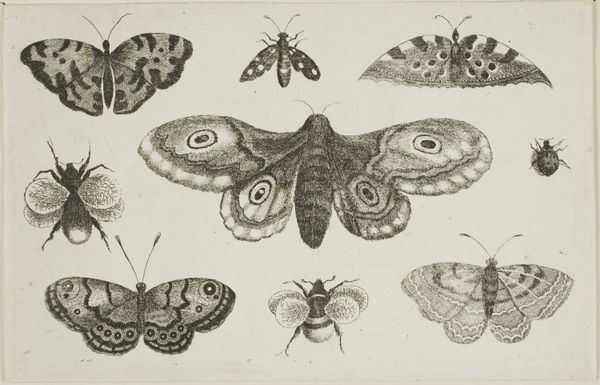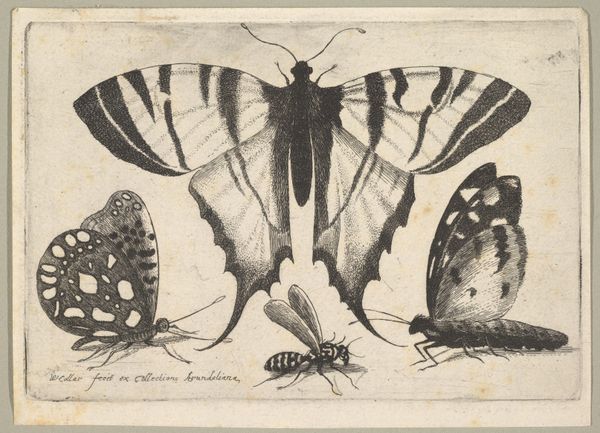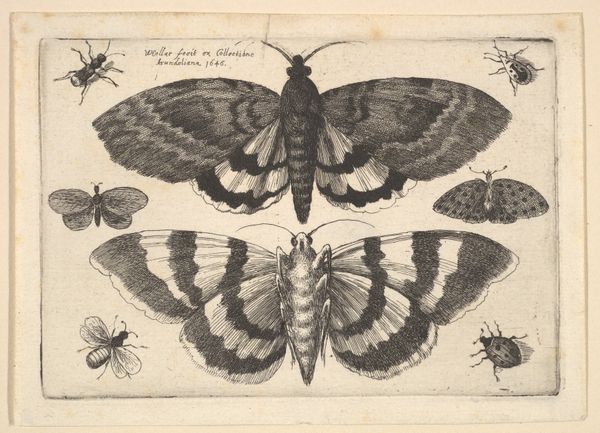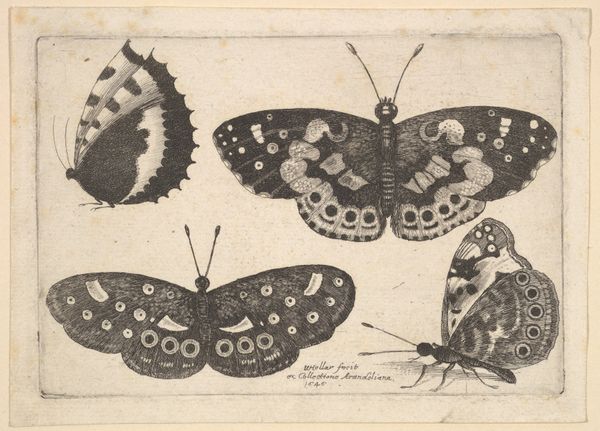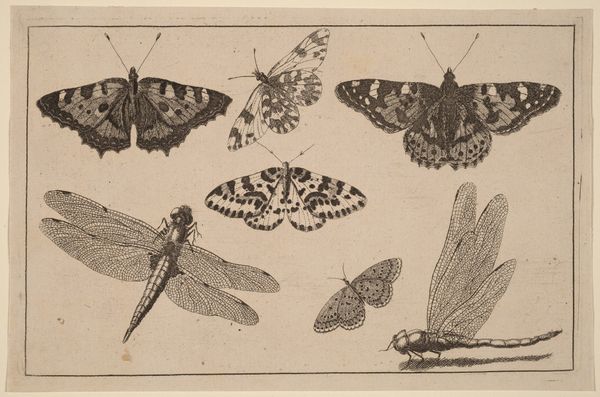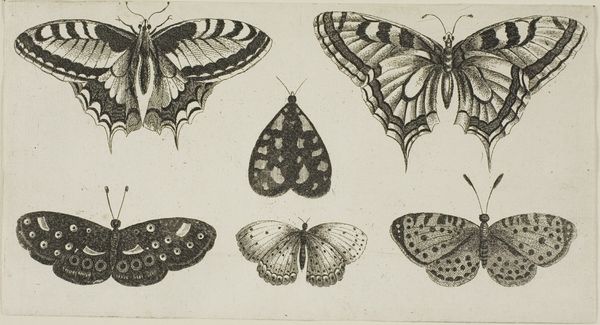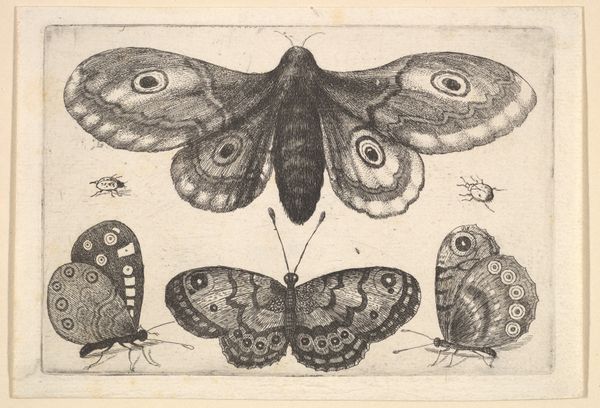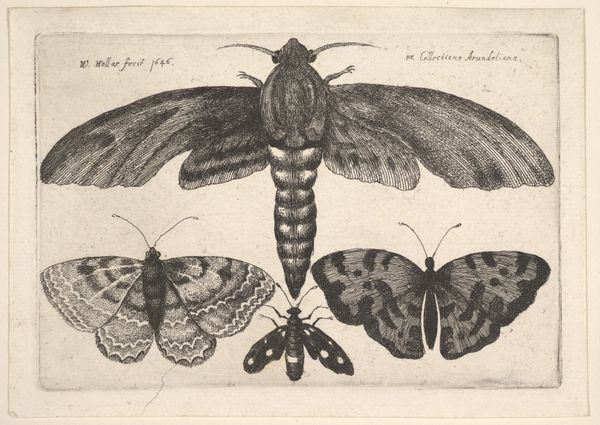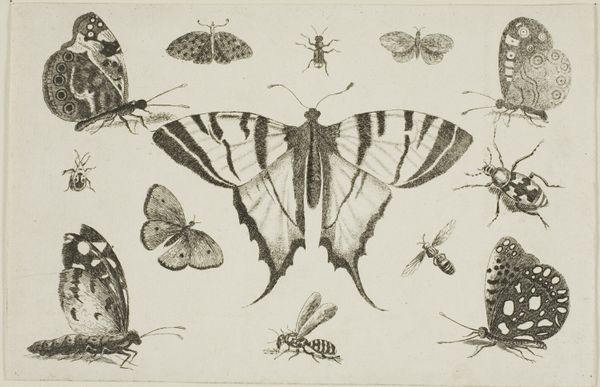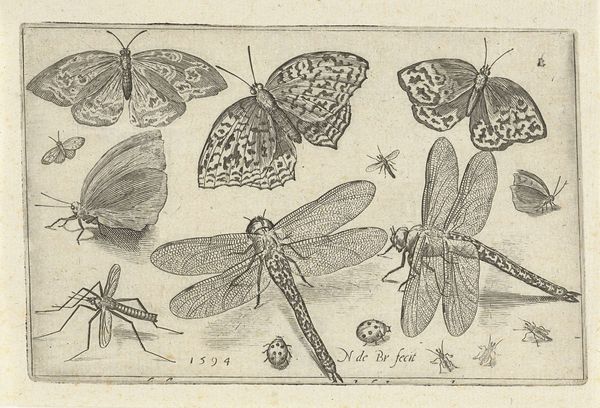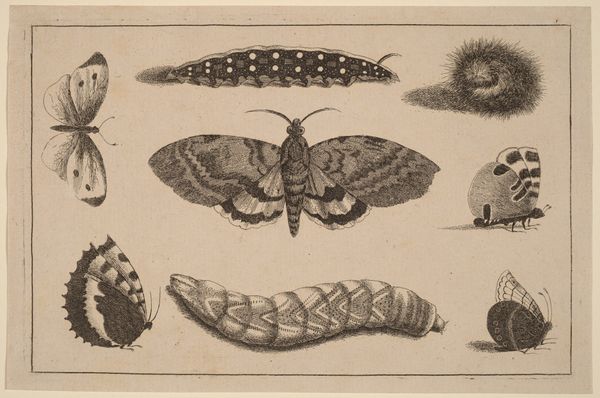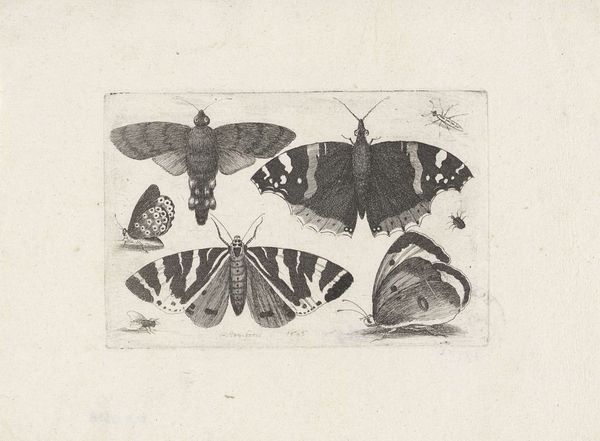
Three moths, two butterflies and a bumble bee 1646
0:00
0:00
drawing, print, etching, engraving
#
drawing
#
baroque
# print
#
etching
#
engraving
Dimensions: Plate: 3 3/16 × 4 5/8 in. (8.1 × 11.8 cm) Sheet: 3 5/8 × 5 1/8 in. (9.2 × 13 cm)
Copyright: Public Domain
Wenceslaus Hollar created this print, "Three moths, two butterflies and a bumble bee," in 1645 using etching. The composition neatly arranges the insects, each meticulously rendered to display their unique patterns and forms. The limited tonal range emphasizes the linear qualities of the etching technique. Hollar's work aligns with the burgeoning scientific curiosity of his era. His precise depictions reveal an interest in cataloging and understanding the natural world, typical of the early modern period. We can interpret the arrangement of the insects as a kind of visual taxonomy, reflecting early efforts to classify and order the natural world through observation. The varying densities of the etched lines create textures that mimic the insects' surfaces, appealing to the eye. Note how the texture functions aesthetically and as a form of data that contributes to the overall scientific aesthetic of the print. The artwork invites us to consider how art and science intersect, offering insights into how knowledge was constructed and disseminated in the 17th century.
Comments
No comments
Be the first to comment and join the conversation on the ultimate creative platform.
